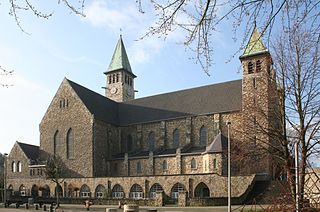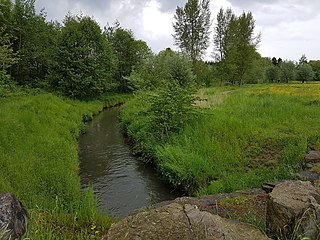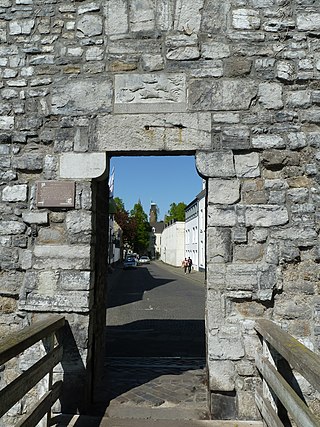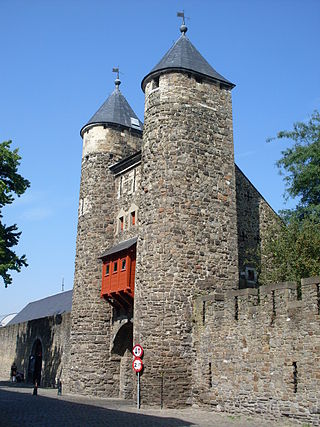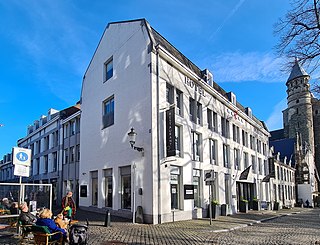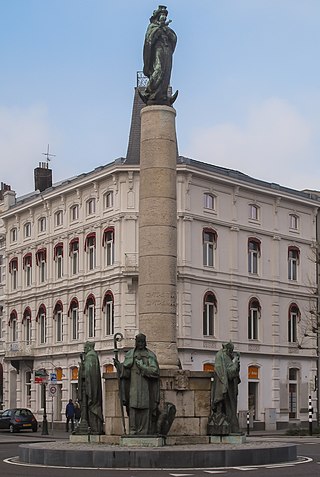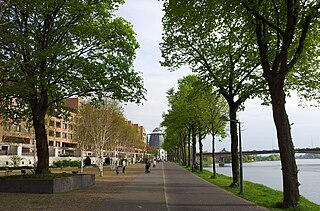Self-guided Sightseeing Tour #3 in Maastricht, Netherlands
Legend
Guided Free Walking Tours
Book free guided walking tours in Maastricht.
Guided Sightseeing Tours
Book guided sightseeing tours and activities in Maastricht.
Tour Facts
5.8 km
79 m
Experience Maastricht in Netherlands in a whole new way with our self-guided sightseeing tour. This site not only offers you practical information and insider tips, but also a rich variety of activities and sights you shouldn't miss. Whether you love art and culture, want to explore historical sites or simply want to experience the vibrant atmosphere of a lively city - you'll find everything you need for your personal adventure here.
Activities in MaastrichtIndividual Sights in MaastrichtSight 1: Sint-Theresiakerk
The St. Theresia Church is a church building in the Dutch city of Maastricht, located on the Theresiaplein in the neighborhood Biesland in Maastricht-Southwest. The Roman Catholic parish church is named after the 19th-century Saint Therese of Lisieux. Since 2022, the Saint Theresia parish has shared the church and outbuildings with the South Netherlands Philharmonic. The building of Kunrader stone from the early 1930s is a municipal monument.
Sight 2: Jekerpark
The Jekerpark is a city park and nature park on the edge of the center of Maastricht. The park is a continuation of the Maastricht City Park and is also part of the Jekerdal nature reserve.
Sight 3: Nieuwenhofpoortje
The Nieuwenhofpoortje, formerly known as the Begijnenpoortje or gate at the Zwingelput, is a poterne, a secondary gate in the city wall of the Dutch city of Maastricht. The gate was installed in the 14th century in the Nieuwenhofwal, part of the second medieval city enclosure of Maastricht and is located between the south end of the street Zwingelput (Jekerkwartier) and the pedestrian bridge over the southern Jeker branch in the Maastricht City Park.
Sight 4: Stadspark Maastricht
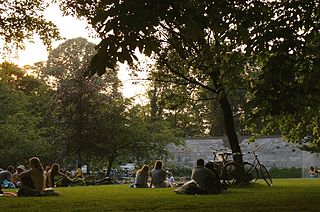
The Stadspark Maastricht is a city park on the edge of the center of the Dutch city of Maastricht. The park consists of a series of sub-parks, which were created in the course of the 19th and 20th centuries and each have its own atmosphere. The park design is largely determined by the presence of the fortifications of Maastricht.
Sight 5: Waalse kerk
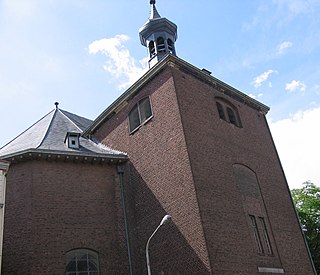
The Walloon Church, also known as the French Church, is a church building in the austere Baroque style in the center of the Dutch city of Maastricht. The church is located on the Sint Pietersstraat in the Jekerkwartier, diagonally opposite the Old Friars Minor Church.
Sight 6: Poort Waerachtig
De Poort Waerachtig, also known as Poort Waarachtig, is a 19th-century gate in the center of the Dutch city of Maastricht. The gate was built as a pseudo-city gate in part of the medieval city wall to create a connection between the Begijnenstraat and the Sint Pieterskade in the Jekerkwartier.
Sight 7: Helpoort
The Hell Gate, formerly known as Jekerpoort, Hoogbruggepoort, Alde Poort op den Ancker, Kruittorenpoort or De Twee Torens, is a former city gate in the Dutch city of Maastricht. The gate is part of the first city wall of Maastricht and is located in the Jekerkwartier at the southern end of the Sint Bernardusstraat, opposite the Pesthuys. The gate dates from the second quarter of the 13th century, making it the oldest surviving city gate in the Netherlands.
Sight 8: Museumkelder Derlon
The Derlon Museum Cellar is a small archaeological museum in the centre of the Dutch city of Maastricht, where an important excavation from Roman times can be visited. The excavation has been protected as a national monument since 2004. The museum cellar is located in the basement of Hotel Derlon on the Onze Lieve Vrouweplein and is accessible on request.
Sight 9: Museum aan het Vrijthof
The Fotomuseum aan het Vrijthof is a museum of photography in Maastricht, Netherlands.
Sight 10: Sint-Janskerk
The Sint-Janskerk is a Gothic church in the center of Maastricht, Netherlands. The Protestant Sint-Jan is situated next to the Roman Catholic Basilica of Saint Servatius on the town's main square, Vrijthof.
Sight 11: Drukkunstmuseum
The Drukkunstmuseum is a museum located at Jodenstraat 22 in the Limburg capital Maastricht.
Sight 12: Mariamonument
The Maria Monument, also known as Maria column or monument of the bishops of Maastricht, is a monument in honor of the Virgin Mary and four holy bishops of Maastricht in the center of the Dutch city of Maastricht. The sculpture group has been at the intersection of Stationsstraat and Wilhelminasingel since 1952 in the Wyck district. The artwork is a municipal monument.
Sight 13: Heilig Hart van Jezuskerk (Koepelkerk)
.jpg)
The Koepelkerk, officially Sacred Heart of Jesus Church, is a monumental domed church in the Dutch city of Maastricht. The church building is located a stone's throw from Maastricht Station on the corner of Scharnerweg and Heerderweg in Wyckerpoort in Maastricht-East. The church has been used from the beginning as a Roman Catholic parish church of the parish of the Sacred Heart of Jesus. Since 2021, the building has also housed an Eritrean Orthodox religious community.
Sight 14: Charles Eyck Park
The Charles Eyck Park is a city park along the Meuse in the Céramique district in the center of the Dutch city of Maastricht. The fairly new park is named after the Limburg painter and sculptor Charles Eyck.
Share
Disclaimer Please be aware of your surroundings and do not enter private property. We are not liable for any damages that occur during the tours.
GPX-Download For navigation apps and GPS devices you can download the tour as a GPX file.
